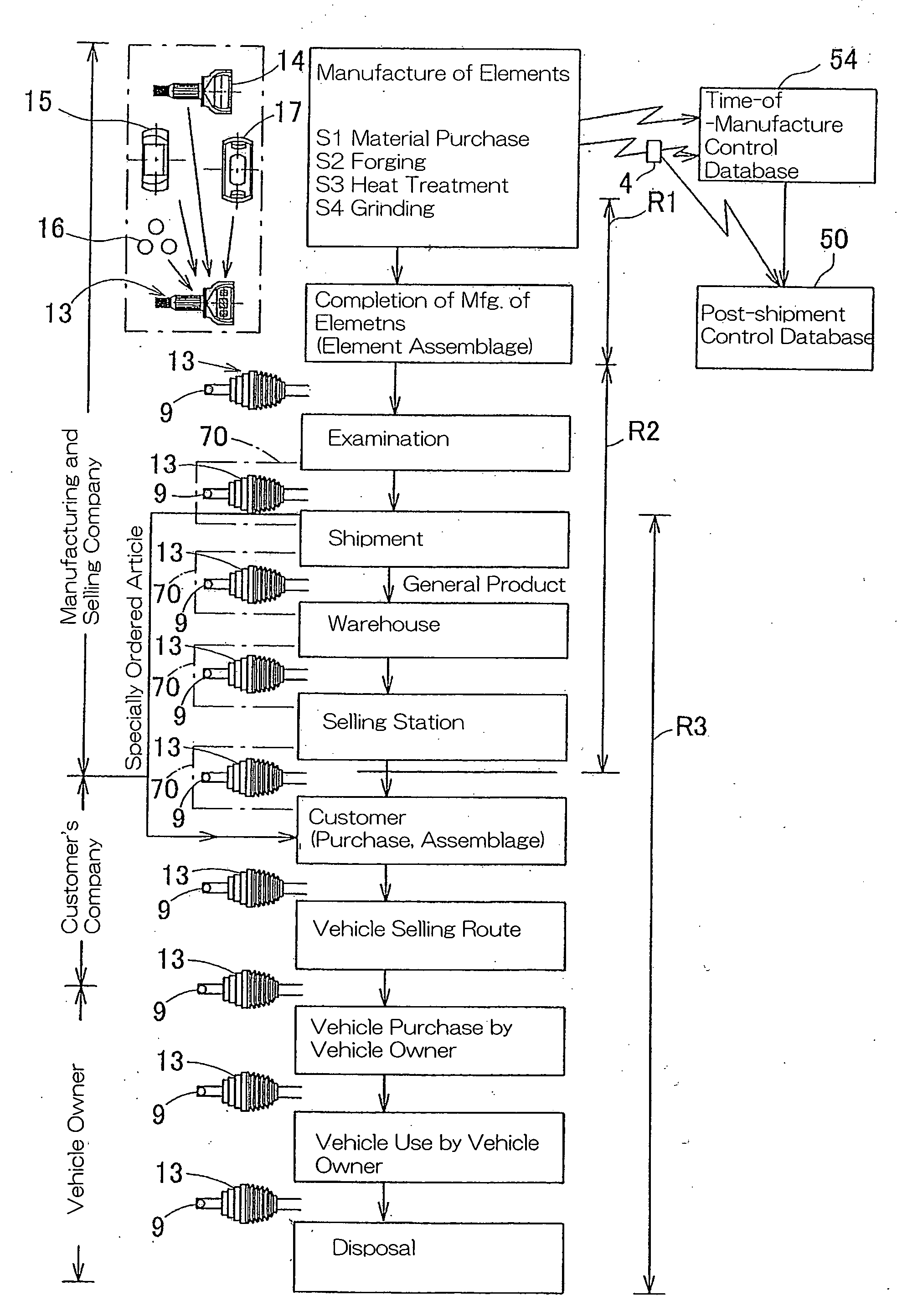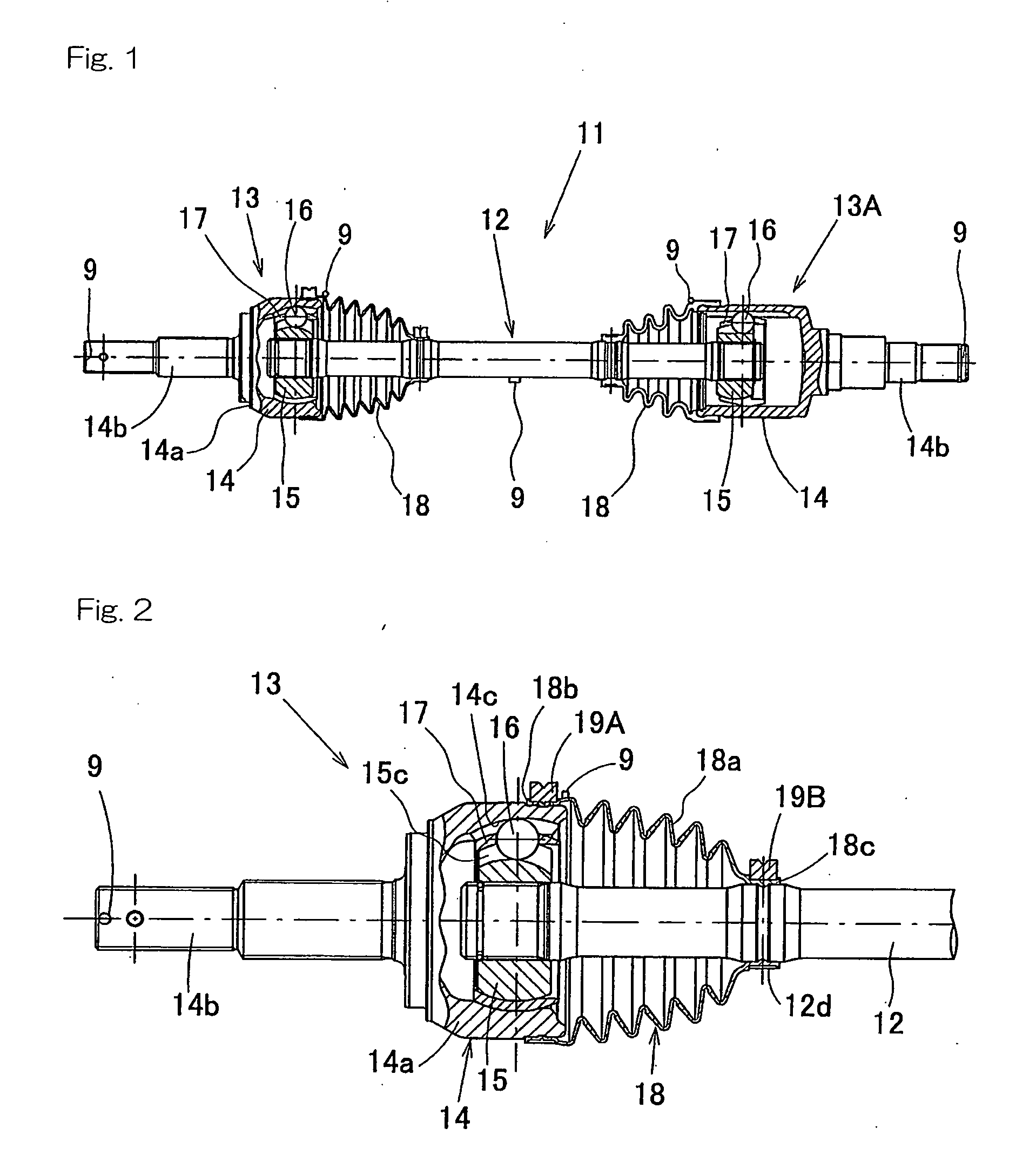The standard IC tags are often incapable of accomplishing a satisfactory information recording, when they are arranged on metals, due to
radio wave absorption and
radio wave reflection.
If the IC tags of a special construction capable of being arranged on metals are used, they will become expensive, which lead to increase of the cost of the constant velocity universal joints.
However, no clue is generally available, which is necessary to know how the constant velocity universal joint is used and, therefore, confirmation of the
actual use thereof in a particular status is impossible to achieve.
Although an attempt is made to store and control the status-of-use of the automotive vehicle itself, it is not sufficient as information necessary to control the status-of-use of the constant velocity universal joint.
Also, in the event that the constant velocity universal joint is replaced with a fresh one in the automotive vehicle, it is not easy to know the status-of-use of the new constant velocity universal joint.
However, the indications such as the manufacturer's serial number, the date of manufacture and the place of manufacture, which are imprinted on the constant velocity universal joint, are not readily available unless the constant velocity universal joint is dismantled.
Because of this, disassembling and reassembling require a substantial amount of labors.
In general, the constant velocity universal joint must be removed to enable the information such as the manufacturer's serial number to be confirmed and this is indeed laborious and costly.
By way of example, the difference in quality may arise even due to the difference in
processing conditions at each of the process steps, and such difference in
processing condition cannot be recognized from a result of examination.
Since in the constant velocity universal joint, even the slight difference in material and precision brings about a substantial difference in performance, the hitherto suggested example of the
quality control method utilizing the IC tags is incapable of resolving the problem.
Also, in the case of the control of the process steps, the conventional control method, in which for each process step, records are manually written in a book and / or inputted in a terminal, requires a substantial amount of labor and, therefore, it is indeed difficult to
record a large amount of information in detail meticulously.
In particular, when it comes to
mechanical products, for example, constant velocity universal joints, each of which is made up of a plurality of elements produced in lots in all stages of the manufacturing process including a step of material purchase, a
grinding step, a
forging step and then a heat treatment step, the control of each element in each step of the manufacturing process is complicated and a substantial amount of labor is required in accomplishing manual recording of the information and inputting operation.
Because of this, it is difficult to meet with the demands for the detailed history information on the mechanical products and, also, the control requires a substantial amount of cost.
In view of the foregoing, the application of the IC tags to the constant velocity universal joint has been contemplated, but the control method such as used in connection with automotive vehicles cannot be applied to the constant velocity universal joints.
However, in the case of the constant velocity universal joint, since the constant velocity universal joint has no element, which provides a complete fiducial such as the frame or the like in the automotive vehicle and since in the manufacturing process each element is manufactured through, for example, the
forging and heat treatment steps, it is difficult to secure the IC tag to the constant velocity universal joint.
Also, in the constant velocity universal joint, since the outer race, the inner race, the
retainer and so on are individually controlled after the manufacturing process including the step of material purchase, the forging step, the heat treatment step, the
grinding step and so on, the application of the IC tag to the quality control poses a problem of how it should specifically be used and, therefore, the efficient application of the IC tag is difficult to achieve.
 Login to View More
Login to View More  Login to View More
Login to View More 


